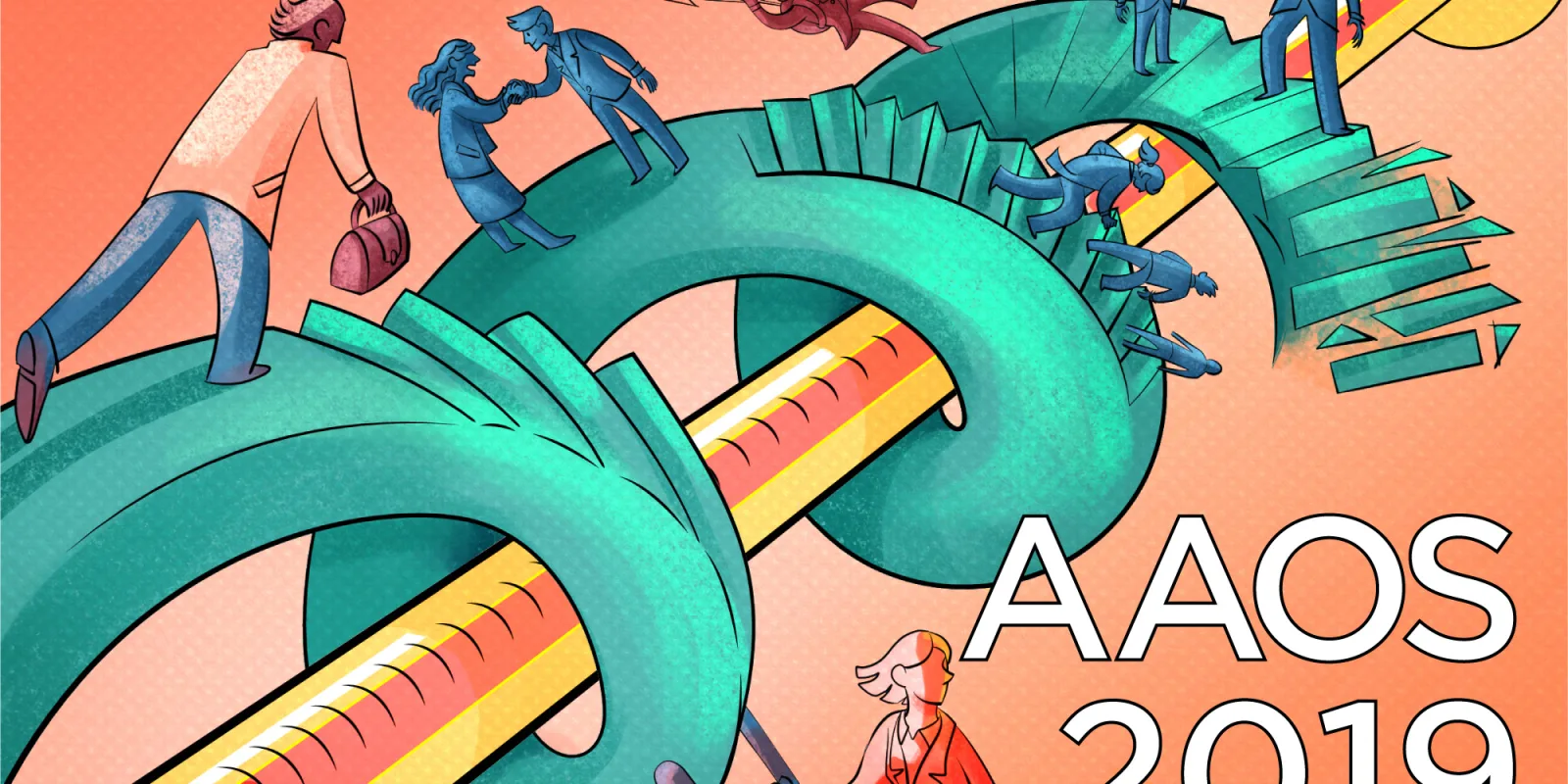
Overall the 2019 AAOS Annual Meeting was a great success in Las Vegas, Nevada. As an Arthroplasty Surgeon, I focused my time on the hip and knee reconstruction sections and I still was unable to see many of the available offerings. There were a tremendous number of clinical papers, scientific exhibits, instructional course lectures and posters (double the number this year, as posters rotated after two days of the meeting). The exhibitors were out in full force with their latest products, a large emphasis was placed on computer navigation, targeting devices, robotic surgery and imageless guidance systems. While all forms of presentation were different, there did seem to be a few common themes, including: opioid use/protocols to limit over-prescribing for hip and knee arthroplasty, spine-pelvis interaction and implications with component placement, infection detection, and goals/techniques to optimize patient outcomes, particularly in the short-stay arena.
In the Adult Knee Reconstruction Session 1 there were several papers reporting research on the utility of new tests to detect infection. This included the utility of detecting biomarkers such as, alpha-defensin and its impact on the decision making process for periprosthetic joint infections. After much discussion it was determined that in difficult cases this test may play a role; however, for routine cases the results did not have a significant impact in the decision making process. Further studies looking into bacterial DNA and RNA detection systems such Next-gen sequencing were discussed at a high level. Techniques for sampling and removal of confounding host genetic material were proffered by the speakers as well as the primary investigators that were present in the audience. Overall, this scientific paper session was well-attended and every minute available for questions was utilized with many people waiting to continue the conversation as time expired.
In the scientific exhibit section there were numerous multimedia setups discussing the interaction of spinal pathology and its impact on total hip arthroplasty. While there is no true consensus, by watching the videos and interacting with the presenters I walked away with a better understanding of the various spinal deformities (long fusions, short fusions, flatback, kyphosis, etc) on the positioning of the pelvis in space. Better assessment of these conditions preoperatively may help with component positioning and lower dislocation rates. These concepts will change my practice and I will be implementing some of the techniques reviewed in the exhibit into my clinical algorithm.
An interesting instructional course lecture reviewed the concept of antibiotic stewardship in various settings, such as outpatient surgery, total joint arthroplasty and trauma surgery. Numerous tips were discussed on what it takes to be a good antibiotic steward as well as pointers on specific infection prevention activities that can be employed to support such a program. All speakers acknowledged the concern for promoting antibiotic resistance amongst bacteria and that drug resistant organisms may be a greater cause of mortality than cancer on a worldwide scale in the near future. A detailed discussion ensued regarding prevention of a growing concern for P. Acnes infections in orthopaedics. Potentially preparing the skin with benzoyl peroxide or hydrogen peroxide may aid in lowering skin concentrations of this naturally occurring bacteria at the surgical site. Will have to stay tuned on this topic as more research will continue to come over the next couple of years.
Lastly, there was significant buzz still over the concerns for “trunnionosis” in primary total hip arthroplasty. Prompt diagnosis and treatment is necessary in these cases as the consequences for patients can be quite drastic if this is delayed. While there was not a consensus amongst surgeons on specifically how to treat these cases, it was agreed that component alignment and stability are paramount as dislocations are quite high when revising these cases. With appropriate attention to detail patients can be successful managed in the setting of corrosion at the head-neck junction of a total hip replacement.
This summary represents only a small portion of what occurred at the meeting for total joint arthroplasty. The remainder of orthopaedic subspecialties were well represented as this is a complete meeting for whatever specialty or interests you may have. Congratulations all to another successful meeting and kudos to all conducting research and taking the time to teach as well as all those that sacrificed time from family and practice to attend and participate in our annual meeting!
Illustration by April Brust







